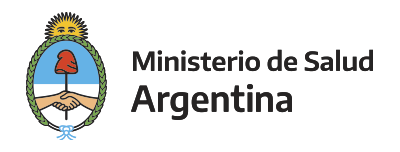Please use this identifier to cite or link to this item:
http://sgc.anlis.gob.ar/handle/123456789/2667| DC Field | Value | Language |
|---|---|---|
| dc.contributor.author | Candela, Ernesto | es |
| dc.contributor.author | Goizueta, Carolina | es |
| dc.contributor.author | Sandon, Leandro | es |
| dc.contributor.author | Muñoz-Antoli, Carla | es |
| dc.contributor.author | Periago, Maria Victoria | es |
| dc.date.accessioned | 2025-08-20T20:15:10Z | - |
| dc.date.available | 2025-08-20T20:15:10Z | - |
| dc.date.issued | 2023-11-07 | - |
| dc.identifier.uri | http://sgc.anlis.gob.ar/handle/123456789/2667 | - |
| dc.description | Fil: Candela, Ernesto. Department of Pharmacy Pharmaceutical Technology and Parasitology, Universitat de València, Burjassot, Spain. | es |
| dc.description | Fil: Goizueta, Carolina. Fundación Mundo Sano; Buenos Aires, Argentina. | es |
| dc.description | Fil: Sandon, Leandro. Fundación Mundo Sano; Buenos Aires, Argentina. | es |
| dc.description | Fil: Muñoz-Antoli, Carla. Department of Pharmacy Pharmaceutical Technology and Parasitology, Universitat de València; Burjassot, Spain. | es |
| dc.description | Fil: María Victoria Periago. Fundación Mundo Sano. Consejo Nacional de Investigaciones Científicas y Técnicas (CONICET); Buenos Aires, Argentina | es |
| dc.description.abstract | Background: Soil-transmitted helminths (STHs) are widely distributed throughout the world. Various factors, including the environment, socioeconomic characteristics, and access to water and sanitation, play an important role in the spread and persistence of these parasites within communities. They, in turn, affect the growth and development of members of the community, especially children. Studies in the northern provinces of Argentina have shown variable prevalence of STHs, but the factors associated with their presence have not been completely elucidated. | es |
| dc.language.iso | en | es |
| dc.relation.ispartof | JMIR | es |
| dc.relation.ispartofseries | JMIR Public Health Surveill;2023;9:e41568 | - |
| dc.subject | Helmintos | es |
| dc.subject | Ancylostoma | es |
| dc.subject | Prevalencia | es |
| dc.subject | Distribución | es |
| dc.subject | Iguazú | es |
| dc.subject | Argentina | es |
| dc.title | The Relationship Between Soil-Transmitted Helminth Infections and Environmental Factors in Puerto Iguazú, Argentina: Cross-Sectional Study | es |
| dc.type | Artículo | es |
| dc.identifier.doi | 10.2196/41568 | - |
| item.fulltext | With Fulltext | - |
| item.grantfulltext | open | - |
| item.openairetype | Artículo | - |
| item.openairecristype | http://purl.org/coar/resource_type/c_18cf | - |
| item.languageiso639-1 | en | - |
| item.cerifentitytype | Publications | - |
| crisitem.author.dept | Administración Nacional de Laboratorios e Institutos de Salud “Dr. Carlos G. Malbrán” (ANLIS) | - |
| crisitem.author.dept | Instituto Nacional de Enfermedades Infecciosas (INEI) | - |
| crisitem.author.dept | Departamento de Bacteriología | - |
| crisitem.author.dept | Servicio Antimicrobianos | - |
| crisitem.author.orcid | 0000-0003-1183-6746 | - |
| crisitem.author.parentorg | Administración Nacional de Laboratorios e Institutos de Salud “Dr. Carlos G. Malbrán” (ANLIS) | - |
| crisitem.author.parentorg | Instituto Nacional de Enfermedades Infecciosas (INEI) | - |
| crisitem.author.parentorg | Departamento de Bacteriología | - |
| Appears in Collections: | Parasitosis intestinales en Argentina | |
Files in This Item:
| File | Description | Size | Format | |
|---|---|---|---|---|
| JMIR Medical Internet Research_2023.pdf | English; 14 pages | 4.54 MB | Adobe PDF | View/Open |
Page view(s)
55
checked on Oct 21, 2025
Download(s)
2
checked on Oct 21, 2025
Google ScholarTM
Check
Altmetric
Altmetric
Items in DSpace are protected by copyright, with all rights reserved, unless otherwise indicated.

